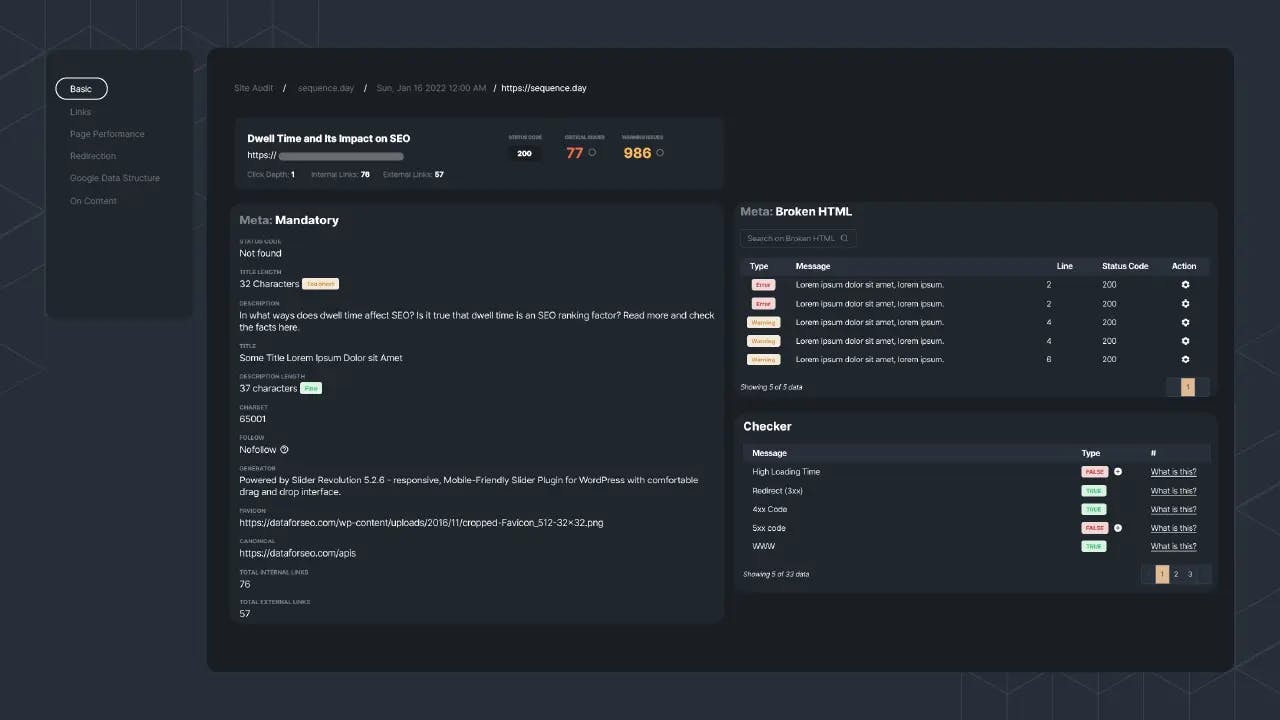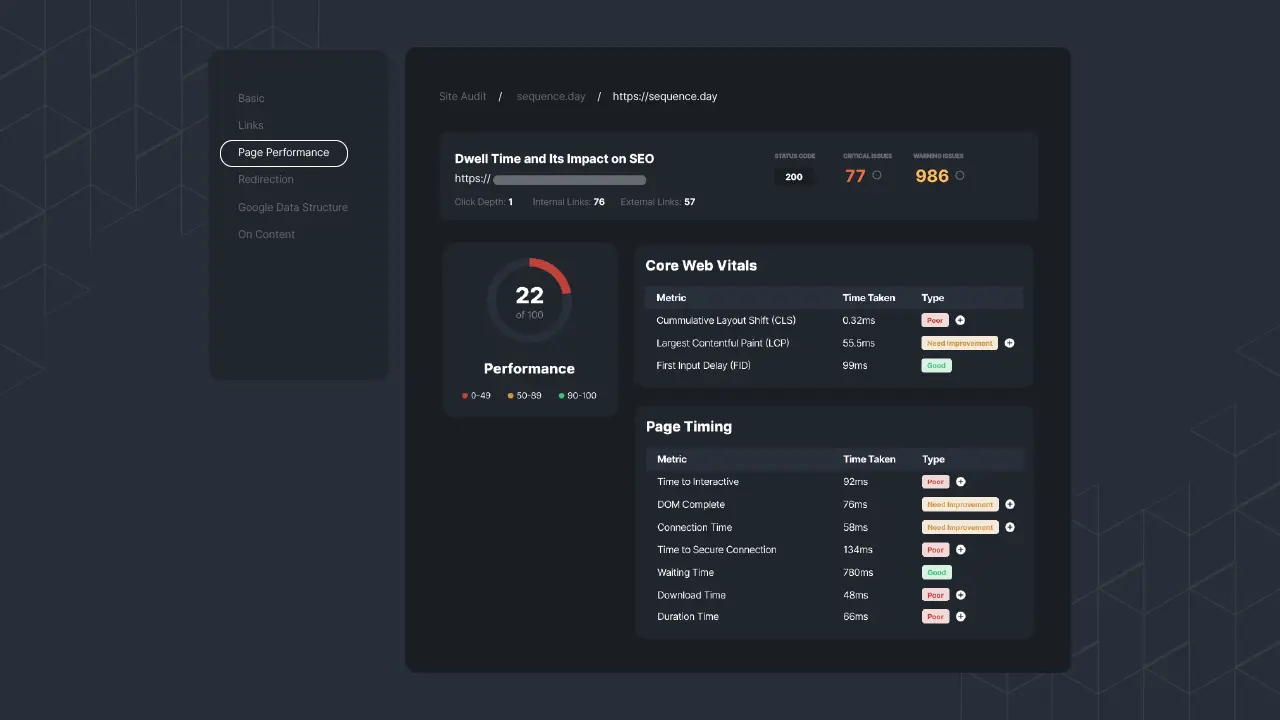Maintaining website health and performance is the key to building a competitive website on the internet. To do that, website owners must conduct a regular site audit to check whether it is in a good state or need improvement.
A website audit is indeed unskippable. By doing it, you will be informed about the current condition. So, how to do that? what metrics need to monitor? find the answer in this definitive guide
Definition of a Site Audit
A site audit is a comprehensive analysis of a website, with the aim of evaluating its overall health, performance, and potential for improvement.
This process helps website owners to identify and address any technical and content-related issues, as well as to optimize their website for better user experience, search engine ranking, and overall performance.
Importance of Conducting A Site Audit
Conducting a site audit is crucial for website owners who want to maintain the health and performance of their websites. Regular site audits can help to identify and fix technical issues, improve search engine optimization, and enhance user experience.
This, in turn, can help to drive more traffic to the website, increase engagement, and boost conversion rates.
A comprehensive site audit can also provide valuable insights into the strengths and weaknesses of a website and can help website owners to make decisions about how to improve their online presence.
Whether you are launching a new website or looking to improve an existing one, a website audit is an essential tool that can help you to achieve your goals.
Site Audit Guide
After you understand the purpose here is how to do a proper audit of your site
Preparation
Before starting the site audit, you need to prepare a few things such as the objective, the data, the tool, and the metrics you want to measure. Here is the explanation.
Setting Objectives
Before beginning a site audit, it is important to establish clear and achievable objectives. This will help you to focus your efforts and ensure that your site audit is productive and effective.
Your objectives should be based on the specific needs and goals of your website. The objective could include improving search engine ranking, enhancing user experience, or fixing technical issues.
Selecting the Right Tools
There are many site audit tools available that can help you to conduct a site audit, including website analysis tools, SEO tools, and more. When selecting the right tools for your site audit, consider the specific needs and goals of your website, as well as the cost and complexity of each tool.
You can use Sequence Stats just release a new feature on Site Audit. The site audit offered is very comprehensive and complete.
Defining Key Metrics
Once you have gathered your data and selected the right site audit tool, it is important to define the key metrics that you will use to evaluate your website. These metrics could include traffic, engagement, conversion rates, and more. By defining your key metrics, you will be able to focus your site audit efforts and measure the success of your efforts over time.
That way, you will be able to maximize the efficiency of the process and ensure that you are able to achieve your desired outcomes.
Site Audit Metrics
Since you have to know what metrics to audit, we have summarized the essential metrics that you need to include in your site audit report:
General Site Audit
In general, you need to audit all your site to spot areas of improvement and get understandable information. These are the basic metrics you should look out for:
SEO: Check whether your site has implemented the right SEO element such as meta tags,
HTML checking: check if the HTML is functioning to enable all website elements
Page score: used in site auditing to evaluate the overall health and performance of a particular web page. The page score is typically calculated based on a variety of factors, such as content quality, technical SEO, user experience, and more
By auditing those basic metrics, you can make sure that search engines can find your site easily and understand what it is about.

Picture 1: Sequence Site Audit - Basic
On-Page Audit
One of the key components of a comprehensive site audit is content analysis. This involves evaluating the quality and relevance of the content on your website, as well as checking for duplicate content.
Quality and Relevance
The quality and relevance of your content are critical to the success of your website. Your content should be well-written, informative, and follow SEO best practices.
It should also be relevant to your target audience and address their specific needs and interests. When conducting a content analysis, you should evaluate the quality and relevance of your content, and make any necessary updates or revisions to improve its effectiveness.
Duplicate Content
Duplicate content can be a major issue for websites, as it can negatively impact search engine ranking and user experience. During your content analysis, you should check for any instances of duplicate content, and take steps to remove or consolidate it as necessary.
Page Performance
The next metric is page performance. This is necessary since you need to know how the website performs in achieving its goal.
The page performance report should tell the website's condition such as good condition, need improvement, or poor. Not to mention, the core web vitals should be reviewed to see how good the site is in supporting user experience.
Users can also see the results of page performance analysis with Lighthouse which provides more complete data such as performance, accessibility, best practices, SEO score, and PWA.

Picture 2: Page performance report in Sequence Site Audit
Links
Auditing all links in a website are important for several reasons:
To spot broken links: Broken links can negatively impact user experience and search engine ranking
To evaluate link redirection: Link redirection can cause issues with user experience and search engine ranking. By auditing all links, you can ensure that all links are properly redirected to the correct page, and avoid any confusion or frustration for your users.
Link Maintenance: Websites and pages can change over time, which can cause links to become broken or outdated. By auditing all links on a regular basis, you can ensure that your links are always up-to-date and functioning properly.
By regularly checking for broken links, link quality, relevance, redirection, and maintenance, you can ensure that your website is providing the best user experience.

Picture 3: Sequence Site Audit - Link
Conclusion
Conducting a comprehensive site audit is an important step in maintaining the health and performance of your website. By thoroughly evaluating all aspects of your website including the above metrics, you can identify areas for improvement and make necessary changes.
The above pictures are taken from the Sequence Site Audit tool which provides a complete site audit report. You can use it and schedule the site audit regularly so that it sends you the report.
To experience the ease of auditing the website, register to Sequence now and have a free trial.